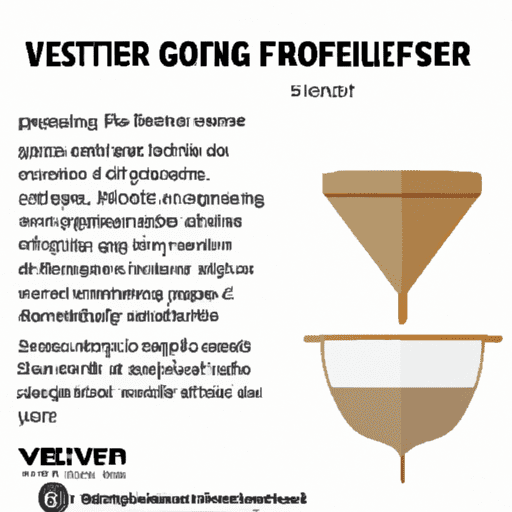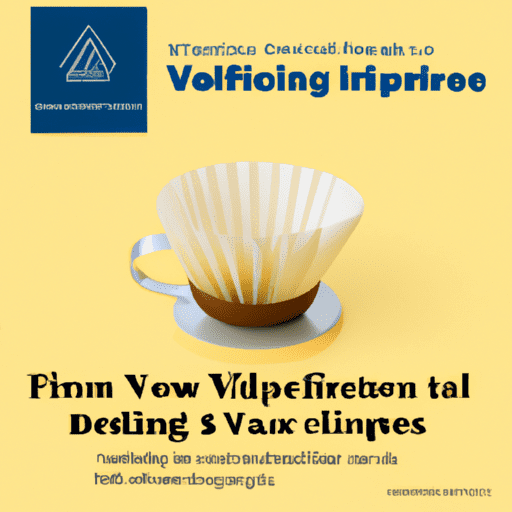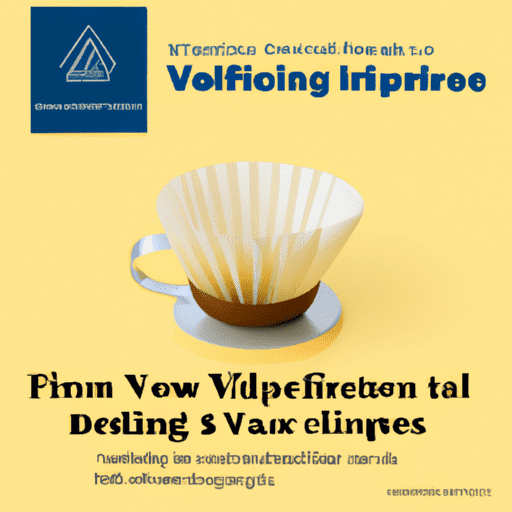There’s nothing quite like the aroma of freshly brewed pour over coffee filling the room. You, coffee aficionado, understand this all too well. So what do you do when your pour over coffee filter decides to clog, hindering that perfect brew? “Unclogging Your Pour Over Coffee Filter: A Guide for Coffee Lovers” is here to navigate you through exactly that. This piece assures practical solutions to clean and maintain your filter, ensuring you get back to the pure delight of your aromatic brews swiftly. So, let’s help you keep the coffee flowing as immaculately as your love for it.

Why is your pour over coffee filter clogged?
Oh no! Have you noticed your pour over coffee filter isn’t letting through as much liquid as before? Don’t worry, it’s most likely due to the filter getting clogged. This can happen because of a number of reasons which we will delve into in this article.
Understanding the cause of clogs
Clogs in a coffee filter can be due to various reasons but it all comes down to the brewing process. When hot coffee brew perfectly mixes with the grounds, it carries with it a small portion of the coffee grounds and oils. Over time, these tiny particles can build up and block the holes of the coffee filter, resulting in a slower coffee drip or, worst case scenario, a complete stop.
Common reasons for clogs
Common reasons for this unwanted occurrence are either using coffee grounds that are too fine, an overloading of coffee grounds, or simply neglecting the cleaning process. Understanding what causes the clogs will come in handy when trying to prevent this issue.
Effects of a clogged coffee filter
Most importantly, a clogged filter can affect the taste of your coffee. When water cannot distribute evenly over the grounds and through the filter, it alters the extraction process, meaning you might end up with an inconsistent flavor profile. This can make your coffee taste bitter or weak, certainly not the flavors you’re after!
Preventing clogs
Don’t fret if you’ve experienced a clogged filter. There are simple steps you can take to prevent this issue from persisting.
Choosing the right coffee grind
First and foremost, using the right coffee grind size is crucial. For pour over coffee, a medium grind will be your best bet. The reason for this is that too coarse of a grind will allow water to flow through too quickly, resulting in weak coffee. On the other hand, grinds that are too fine will slow down the water flow, causing over-extraction and a bitter taste.
Using the appropriate amount of coffee
Along with ensuring you have the right grind, it is also important to use the correct amount of coffee. You don’t want to overload the filter and cause a build-up of coffee particles and oils, leading to clogs and over-extracted taste. Proper measurements will help for a smoother brewing process.
Rinsing the coffee filter
Even if you use the appropriate amount and type of coffee, cleaning your filter before brewing coffee is just as important. Rinse the coffee filter with hot water before use, as this can help remove any microscopic coffee particles or oils that could build up over time.
Purchasing high-quality coffee filters
Last but not least, investing in a high-quality coffee filter is a good starting point. A good filter won’t allow too much oil and coffee sediment to pass through, preventing the unwanted clogs in the first place.
Identifying a clogged coffee filter
Of course, the first step in rectifying a problem is to identify that it exists. This comes in the form of recognizing the signs of a clogged filter and what to do about them.
Signs of a clogged filter
The signs of a clogged filter will include a slower than usual water flow, or even a complete stop. You may also notice a change in the taste of your coffee as mentioned above, which is a direct result of uneven coffee extraction.
Testing the flow rate
To test your coffee flow rate, simply pour hot water directly onto the coffee filter without any coffee grounds. If the water takes noticeably longer to pass through than usual, this might be a sign that your filter is clogged.
Visual inspection
The easiest way to check if your coffee filter is clogged is through a visual inspection. If you see a build-up of coffee grounds or oils, chances are your filter needs a good clean.

Unclogging methods
Taking the proper steps to unclog your coffee filter can make a world of difference in the taste and enjoyment of your coffee.
Using hot water
The simplest way to unclog your coffee filter is by running hot water through it. This will help to loosen and wash away any remaining coffee particles and oils.
Using a coffee filter brush
A small cleaning brush can be used to gently scrub the filter to remove any remaining residue. Be gentle though, as vigorous scrubbing could potentially damage your filter!
Using vinegar
You can also use a vinegar solution to unclog your coffee filter. Simply mix equal parts vinegar and water and soak the filter in this solution before rinsing it thoroughly to remove any vinegar taste.
Soaking in a baking soda solution
Another natural method is to use a baking soda solution. Like the vinegar solution, mix equal parts of water and baking soda and let your filter soak in it before thorough rinsing. This will also help to remove the build-up of coffee grounds and oils.
Cleaning and maintenance tips
Keeping your coffee filter clean isn’t just about troubleshooting clogs – it should be part of your regular routine.
Regular cleaning routine
Establishing a regular cleaning routine after every use will prolong the life of your filter, and keep your coffee tasting fresher for longer. Simply rinse the coffee filter with hot water after each use to help prevent clogs.
Storing the coffee filter properly
Once the filter has been cleaned, always make sure it is completely dry before storing it. This prevents moisture from becoming trapped, which could potentially cause mold and unpleasant odors.
Replacing the filter when necessary
Sometimes, despite your best cleaning efforts, your coffee filter might need to be replaced. If you notice persistent clogs or changes in the quality of your brew despite good cleaning habits, that could be a sign your filter’s time has come.
Troubleshooting other pour over coffee issues
Clogging is not the only issue that can arise when brewing a pour over coffee. Other common issues include uneven extraction, bitter or weak coffee taste, and inconsistent brew time.
Uneven extraction
Uneven extraction can often be caused by an uneven coffee bed or an incorrect brew method. Always ensure your coffee grounds are evenly spread and the water is poured slowly and carefully for best results.
Bitter or weak coffee taste
A bitter or weak coffee taste can be caused by clogs, but it can also be due to the incorrect coffee-water ratio or an improper grind size.
Inconsistent brew time
Brew times that are too long or too short can produce poor tasting coffee. This could be due to clogs, an incorrect water temperature, or the wrong grind size for your coffee beans.
Alternative pour over methods
If you’re having continuous issues with cloggs, consider altering your brewing method.
Aeropress
The Aeropress method, similar to a French press, uses immersion brewing for a full-bodied brew but thanks to its paper filter, it produces a cleaner cup than a French press.
Chemex
The Chemex functions similar to a classic pour over but with an iconic hourglass design and thicker filters for a richer taste.
French press
This is a popular alternative which involves immersing ground coffee directly in hot water. It requires no filter, thus avoiding the clog issue altogether.
Exploring different coffee filter options
Perhaps it’s not your methods causing the issue but the type of filter you’re using.
Paper filters
While disposable paper filters create a clean cup of coffee by capturing most of the coffee’s oils, they can sometimes contribute to clogs.
Metal filters
Metal filters are great for creating a more robust brew as they allow more oils and fine particles to pass through. Plus, they’re reusable and easy to clean.
Cloth filters
Cloth filters are an an eco-friendly option that produces a clean cup, but they require meticulous care to prevent mildew and off-flavors.
The benefits of using a pour over coffee filter
Pour over coffee brewing, though it may seem demanding, has its rewards.
Enhanced flavor and aroma
The slow pouring process and the blooming phrase allow the coffee to release gases leading to an enhanced flavor profile and a wonderfully aromatic cup.
Control over brewing process
Pour over brewing offers you complete control over water temperature, water flow, and steeping time, giving you a personal and intimate coffee brewing experience.
Sustainable and eco-friendly choice
By using reusable filters, you’re making a sustainable choice and reducing waste, making it both good for you and the environment.
Conclusion
Clogged coffee filters can indeed hamper your daily coffee ritual. But with understanding why clogs occur and how to prevent and fix them, you’re well on the way to coffee perfection. So, now that you’re armed with all this knowledge: grind, pour and enjoy your next cup. Better days are brewing!
